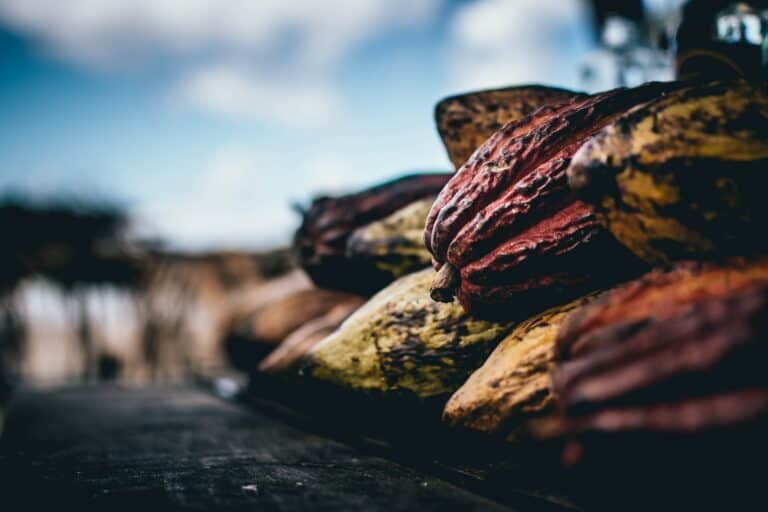In the realm of confectionery, it’s difficult not to acknowledge the worldwide admiration for cocoa-based products. The success of this intriguing ingredient is deeply rooted in the meticulous cocoa processing methods that transform the humble cocoa bean into a key ingredient used in many of our beloved treats such as chocolate milk, brownies, truffles, and more. This post will delve into the captivating journey that spans from harvesting cocoa beans to creating luscious cocoa butter and richly flavored cocoa powder.
Cocoa Harvesting
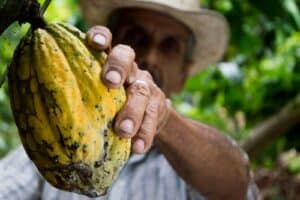
The journey of cocoa production begins in the tropical regions, where the cacao tree is native. The harvested fruit, or pods, are split open to reveal the precious beans enveloped by a sweet pulp surrounding them, acting as their natural shield. Harvesting the cocoa beans is an art, calling for the perfect timing to capture the beans at their ripest, ensuring that the essence of chocolate flavor is securely tucked within them.
Fermentation Process
Next, we venture into the fermentation process, a pivotal stage in cocoa processing that sets the foundation for the beans’ flavor development. Traditional methods involve heaping the freshly harvested beans and pulp into wooden boxes, covered with banana leaves or jute cloth, starting off a controlled, spontaneous fermentation by the naturally present yeasts and bacteria. As the pulp ferments, it generates heat and alcohol, and these conditions start the ‘natural death’ of the cocoa bean. This fermentation is crucial in mellowing down the raw bitter taste and allowing the fruity, chocolatey flavor to surface.
Drying Process
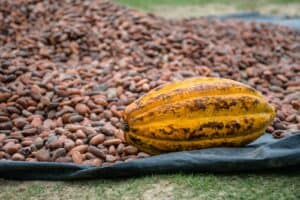
Post fermentation, we move onto the drying process. This stage aims to reduce the bean’s moisture content, making it viable for shipment to chocolate factories around the world. Using the sun’s hot air is the conventional method, spreading the fermented beans on bamboo mats or concrete platforms. It’s a complex process requiring regular turning of the beans to ensure even drying.
Roasting
The cocoa industry centers its attention to the roasting process at the heart of the factory operations. It’s during roasting that the iconic aroma and chocolate flavor begin to bloom. This stage is performed at various temperatures and periods, ranging from low to high-pressure conditions.
Grinding Cocoa Beans
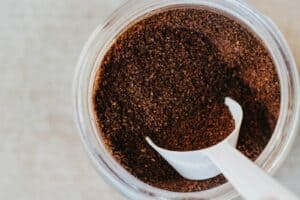
After roasting, the beans transition onto the grinding phase. The outer shell is removed, leaving behind roasted cocoa nibs; their destiny to be ground into fine cocoa mass or cocoa liquor. Grinding cocoa beans elicits the cocoa butter content within them.
Conching
Conching is almost the meditative step in the entire cocoa processing system, where the granulated cocoa liquor undergoes extended kneading, aerating, and heating in a process that could last from mere hours to several days. Cocoa solids and sugars are perfectly blended together during this part of processing, enhancing the fluidity, and refining the particle size, which results in a heavenly, creamy mouthfeel when indulged. Cocoa butter content is regulated here, based on the envisioned final product, be it low-fat cocoa powder, medium-fat cocoa powder, or high-fat cocoa powder.
Tempering
We now approach tempering; this method aims to create an evenly mixed crystal form of cocoa butter, lending a shine to the chocolate and creating a desirable snap when bitten into. This process’s diligence lies in diligently bringing the chocolate to a precise temperature, cooling it, and then slightly reheating it.
Molding
Molded into bars, shells, or whatever creative shape the product is destined for, is the next step of processing. Predominantly, cocoa liquor is the star in dark chocolate, whereas milk chocolate sees a happy addition of milk powder and sugar to the mixture, drawing a smoother, creamier palate.
Packaging
Finally, packaging plays a pivotal role from ensuring the products’ freshness to marketing aesthetics: cocoa cakes, cocoa powders, and other cocoa products are typically packed in foil-lined bags or cardboard boxes, sealed to retain the aroma and flavors.
Cocoa Processing Methods
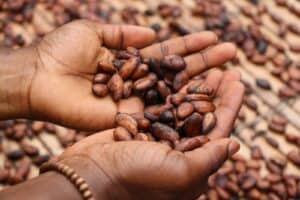
The road from the Cacao tree to the chocolate bar is long, complex, and fascinating. The intriguing methods of temperature-controlled roasting, meticulous grinding, prolonged conching, specific tempering, and creative molding all contribute to the vast variety of flavors, textures, and types of chocolate and cocoa-related products we relish today. The cocoa industry tirelessly refines these cocoa processing techniques to enhance the sensory experiences associated with their products, ensuring every bite we take encapsulates the laborious journey it underwent from bean to bar.
By understanding these cocoa processing methods, we comprehend the herculean effort that goes into refining each cocoa bean to release its flavors, celebrate its texture, and charm us into coming back for more. It’s this journey that transforms the cocoa bean into an absolute culinary delight, enriching our lives with its complex flavors and manifold forms.
